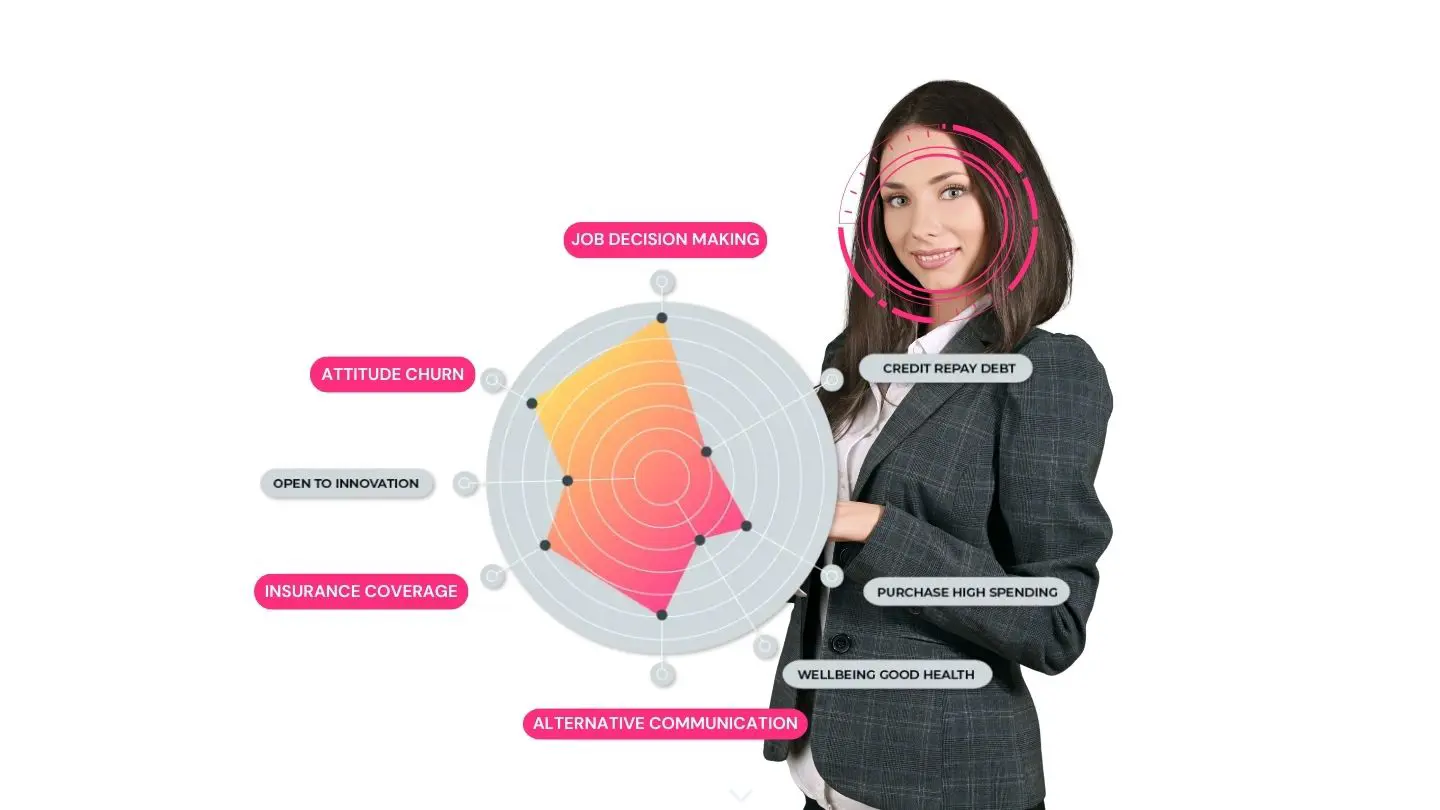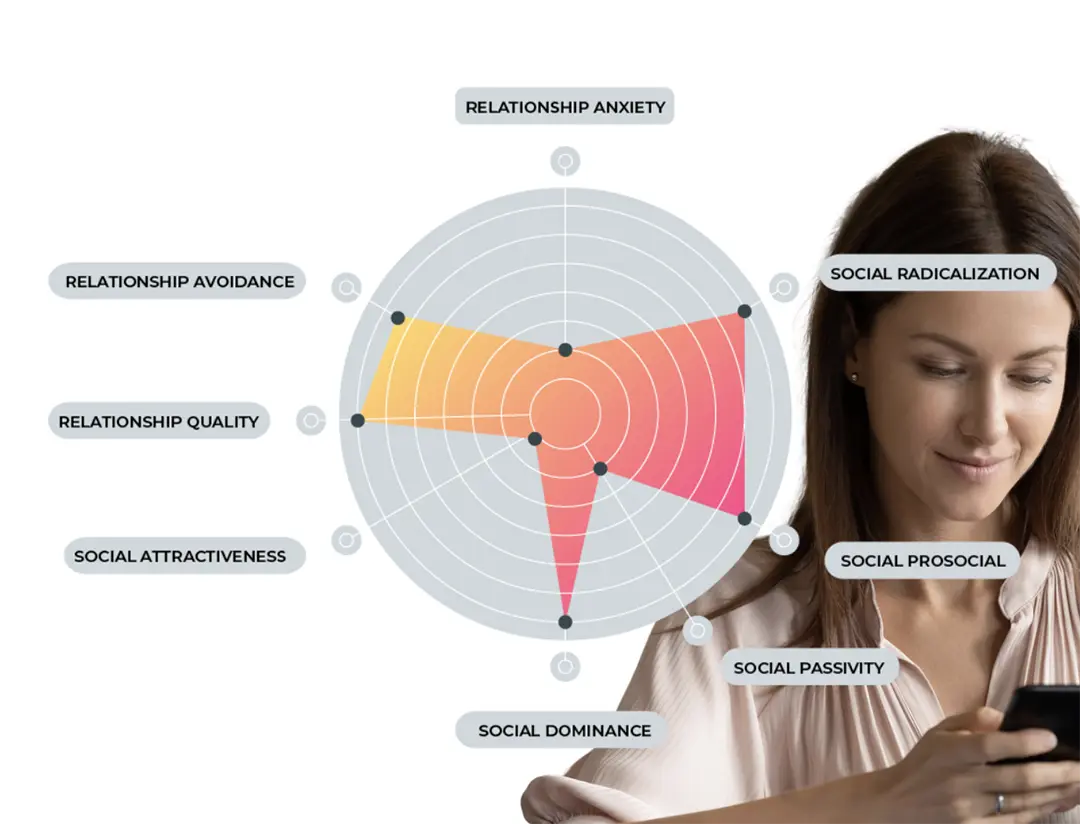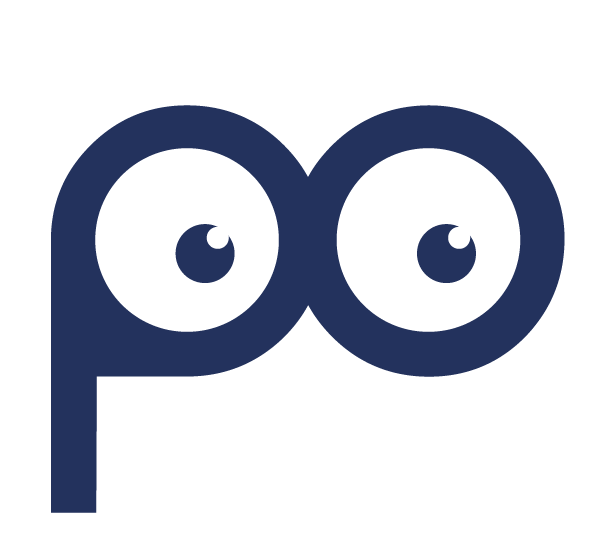How do you profile your customers?
In today’s increasingly digital and interconnected world, fully understanding your customers with customer profiling is essential to the success of any business.
However, the question arises: which methodology is most effective for obtaining a complete and accurate view of our customers? Sentiment analysis, behavioral analysis or use predictive software for customer profiling?
In this article, we will explore these different methodologies and evaluate which one might be best suited to the needs of your business.
Written by portrait team


Sentiment Analysis
Sentiment analysis is just a snapshot of customer emotions.
Sentiment analysis is a methodology that focuses on analyzing users’ emotions in order to understand their opinions and feelings.
This approach is particularly useful for monitoring brand perception on social media, evaluating customer satisfaction and identifying any problems or critical issues in the products or services offered.
Sentiment analysis, however, limits itself to photographing the current situation, but does not give indications on behavior.

Behavioural analysis
Behavioral analysis uses data generated by users during their online interactions, such as, for example, user-generated content, clicks on websites, searches performed, online purchases and more. This approach allows detailed profiles of users to be created based on their past behaviors, allowing companies to personalize their marketing strategies and deliver more targeted and relevant experiences to users.
However, this methodology presents serious drawbacks in terms of potential privacy violations and data collection difficulties, furthermore exposing the evaluation of the generated contents to a potential risk of bias.

Customer profiling
The analysis of customer personality traits through the use of predictive software goes beyond visible behavioral data, examining the user’s character traits in terms of attitudes, interests and possible behaviors.
Using a machine learning tool based on datasets from psychology, this methodology allows you to obtain a deeper understanding of customers, identifying their needs, preferences and latent motivations.
This can be especially valuable for market segmentation, personalizing offers, and developing customer loyalty strategies.


Which customer profiling methodology is the best?
Each methodology is valid based on the application context:
1. sentiment analysis is ideal for monitoring brand sentiment and customer satisfaction on social media;
2. behavioral analysis uses information extracted from generated content to personalize marketing strategies based on users’ online behaviors;
3. customer profiling allows us to detect the main personality traits of users, and is useful for building “buyer personas”, and to anticipate communication and the most appropriate next best actions.
However, the customer profiling methodology is the only one capable of overcoming the limits relating to the risk of bias, violation of privacy and difficulties in obtaining data.
As anticipated, in analyzing behavior, companies use customer content and data collected through many techniques and channels, such as social logins, opt-ins and web scraping.
However, these activities pose serious privacy concerns, since the information taken from the web, even if public, could contain potentially sensitive data categories such as political and sexual orientation, health conditions or religion, which could be used in strategies of targeting.
The customer profiling methodology, on the other hand, is based on a predictive profiling technology that analyzes the functional words used in conversations: Portrait-Profiling

The research
The research underlying the Portrait technology, carried out by the University of Trento and MIT in Boston, has shown that functional words are more informative about people because they are less controlled than content words.
In this way the model underlying the technology is more robust because it allows discrimination beyond the topic.
As a result, profiling psychometric traits offers a deeper insight into customers, allowing them to identify and anticipate their inclinations, attitudes and preferences without incurring the risk of bias and leading to concrete results.
Research results show that predictive psychometrics reduces advertising costs and shows a higher correlation between values and classification accuracy in Business Intelligence activities compared to behavioral profiling.


Conclusion
Choosing the best methodology will depend on your specific business needs and objectives.
However, integrating multiple approaches could be the key to gaining a complete and accurate view of your customers.
Using sentiment analysis to monitor brand sentiment, behavioral analysis to personalize marketing strategies and predictive profiling applied to customer profiling to gain a deeper understanding of the user profile, build your personas, anticipate possible needs and behavior so you can create personalized experiences and anticipate the right communication and actions to take.

Summary
Importance of Customer Profiling in the Digital Context
Understanding your customers is crucial to business success in the connected digital age.
Customer Profiling Methodologies in Comparison
Sentiment analysis, behavioral analysis and psychometric profiling are considered to gain a comprehensive view of customers.
Sentiment Analysis: Photography of Customer Emotions
Useful for monitoring brand sentiment on social media but limited in offering insights into behavior.
Behavioral Analysis: Privacy and Bias
Risk of privacy violations and bias in the analysis of user behavioral data.
Predictive Customer Profiling: Overcoming the Limits
It offers a deeper understanding of customers without risk of bias, privacy violations or difficulties in data collection.
Source: Faster Capital
More articles from our blog

What are the differences between Emotion AI and psychometric profiling?
The main differences between Emotion AI and psychometric profiling according to European AI Act and an ethical view of artificial intelligence.

How AI and Psychology can promote positive changes in people
AI and psychology can work together to facilitate personalized communication aimed at promoting positive changes in people.

Marketing Segmentation with Psychometric Traits
Psychometric profiling for marketing allows you to identify the main character traits and expected behavior of prospects and customers to set the communication strategy and marketing campaigns.

FOLLOW US ON LINKEDIN
Curious to know more about customer profiling?
Follow us on Linkedin.

Offices
Viale Fulvio Testi, 128 20092 – Cinisello Balsamo (MI)
Headquarter
Via Meuccio Ruini 10, 42124 - Reggio Emilia (RE)
